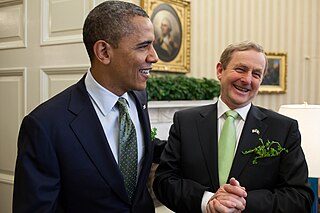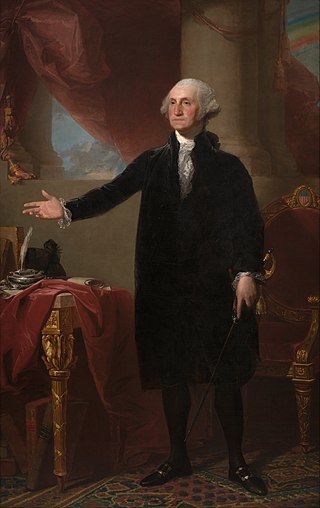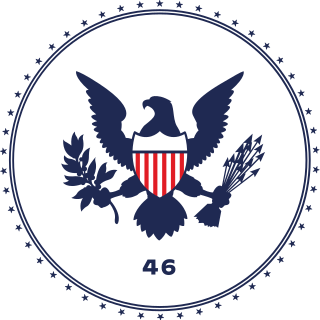
In the United States, Patriot Day occurs on September 11 of each year in memory of the people killed in the September 11 terrorist attacks in 2001.
The National Day of Prayer is an annual day of observance designated by the United States Congress and held on the first Thursday of May, when people are asked "to turn to God in prayer and meditation". The president is required by law to sign a proclamation each year, encouraging all Americans to pray on this day.
WHITEHOUSE.ORG is a parody website, first registered in 1995, that has satirized the president of the United States intermittently since 1996. It is currently entitled TRUMP® WHITE HOUSE, and is published by Americatastic, Inc.

Irish Heritage Month is an annual observance originating in the United States, where it is known as Irish-American Heritage Month. It has received official recognition from governments in the United States and Canada. It was first celebrated by proclamation of the President and Congress in the United States to honor the achievements and contributions of Irish Americans. The heritage month is in March to coincide with Saint Patrick's Day, the Irish national holiday on March 17. Heritage Months are usually proclaimed by nations to celebrate centuries of contributions by a group to a country.
In the politics of the United States, an October surprise is a news event that may influence the outcome of an upcoming November election, whether deliberately planned or spontaneously occurring. Because the date for national elections is in early November, events that take place in October have greater potential to influence the decisions of prospective voters and allow less time to take remedial action; thus, relatively last-minute news stories could either change the course of an election or reinforce the inevitable. The term "October surprise" was coined by William Casey when he served as campaign manager of Ronald Reagan's 1980 presidential campaign. However, there were October election-upending events that predated the coining of the term.

Counselor to the President is a title used by high-ranking political advisors to the president of the United States and senior members of the White House Office.

The White House Office of the Executive Clerk is responsible for managing the original legal documents signed by the President of the United States which make up his official acts—these include public laws, vetoes, treaties, executive orders, signing statements, nominations, proclamations, commissions, pardons, and certificates of awards or medals. The office is further responsible for delivering any reports or messages the President wishes to send to the United States Congress. Formed in 1865, it is one of the oldest offices in the Executive Office of the President of the United States.

The United States Secret Service uses code names for U.S. presidents, first ladies, and other prominent persons and locations. The use of such names was originally for security purposes and dates to a time when sensitive electronic communications were not routinely encrypted; today, the names simply serve for purposes of brevity, clarity, and tradition. The Secret Service does not choose these names, however. The White House Communications Agency maintains a list that candidates choose from, often choosing ones that resonate with them personally.
During the 2007 Congressional investigation of the dismissal of eight U.S. attorneys, it was discovered that administration officials had been using a private Internet domain, called gwb43.com, owned by and hosted on an email server run by the Republican National Committee, for various official communications. The domain name is an abbreviation for "George W. Bush, 43rd" President of the United States. The use of this email domain became public when it was discovered that Scott Jennings, the White House's deputy director of political affairs, was using a gwb43.com email address to discuss the firing of the U.S. attorney for Arkansas. Communications by federal employees were also found on georgewbush.com and rnchq.org. Congressional requests for administration documents while investigating the dismissals of the U.S. attorneys required the Bush administration to reveal that not all internal White House emails were available. Conducting governmental business in this manner is a possible violation of the Presidential Records Act of 1978. Over 5 million emails may have been lost. Greg Palast claims to have come up with 500 of the Karl Rove emails, leading to damaging allegations. In 2009, it was announced that as many as 22 million emails may have been lost.

whitehouse.gov is the official website of the White House and is managed by the Office of Digital Strategy. It was launched in 1994 by the Clinton administration. The content of the website is in the public domain or licensed under Creative Commons Attribution license.

Beginning with painter Gilbert Stuart's portrait of George Washington, it has been tradition for the president of the United States to have an official portrait taken during their time in office, most commonly an oil painting. This tradition has continued to modern times, although since the adoption of photography as a widely used and reliable technology, the official portrait may also be a photograph.

The National Space Council is a body within the Executive Office of the President of the United States created in 1989 during the George H. W. Bush administration, disbanded in 1993, and reestablished in June 2017 by the Donald Trump administration. It is a modified version of the earlier National Aeronautics and Space Council (1958–1973).
In the United States, a presidential transition is the process during which the president-elect of the United States prepares to take over the administration of the federal government of the United States from the incumbent president. Though planning for transition by a non-incumbent candidate can start at any time before a presidential election and in the days following, the transition formally starts when the General Services Administration (GSA) declares an “apparent winner” of the election, thereby releasing the funds appropriated by Congress for the transition, and continues until inauguration day, when the president-elect takes the oath of office, at which point the powers, immunities, and responsibilities of the presidency are legally transferred to the new president.
The White House staff position of liaison to the American Jewish community is a role charged with serving as a presidential administration's voice to the community and gathering the community's consensus viewpoint on issues affecting it for the benefit of White House policymakers. It has existed at least as early as the Carter Administration.

The White House Hanukkah Party is an annual reception held at the White House and hosted by the U.S. President and First Lady to recognize and celebrate the Jewish festival of Hanukkah. The tradition was established in 2001, during the administration of George W. Bush. The guest list includes hundreds of American Jewish politicians, organization heads, and school and yeshiva deans.

We the People, launched by the Obama administration on September 22, 2011, is a defunct section of the whitehouse.gov website used for petitioning the administration's policy experts. Petitions that reached a certain threshold of signatures were reviewed by Administration officials who in most instances would subsequently provide an official response. Legal proceedings in the United States were not subject to petitions, rather, the site served as a public relations mechanism for the presidential administration to provide a venue for citizens to express themselves. On August 23, 2012, the White House Director of Digital Strategy Macon Phillips released the source code for the platform. The source code is available on GitHub, and lists both public domain status as a work of the United States federal government and licensing under the GPL v2.

The Northeast Canyons and Seamounts Marine National Monument is a marine national monument of the United States off the coast of New England, on the seaward edge of Georges Bank. It was created by President Barack Obama on September 15, 2016, as the first U.S. marine national monument in the Atlantic Ocean.

The White House Office of Intergovernmental Affairs (IGA) is a unit of the White House Office, within the Executive Office of the President. It serves as the primary liaison between the White House and state, county (or county-equivalent), local, and tribal governments. The office focuses on building new and maintaining current relationships with governors, tribal leaders, mayors, state legislators, and county executives. The Office of Intergovernmental Affairs works with federal agencies and departments to ensure appropriate coordination between state, local, and tribal governments and the federal government. The Director of Intergovernmental Affairs at the White House Office for the Biden administration was Julie Chavez Rodriguez until she resigned on May 16, 2023 to become Biden's Campaign Manager for his 2024 reelection bid. Tom Perez became Director on June 12, 2023.

The presidential transition of Joe Biden began on November 7, 2020, and ended on January 20, 2021. Unlike previous presidential transitions, which normally take place during the roughly 10-week period between the election in the first week of November and the inauguration on January 20, Biden's presidential transition was shortened somewhat because the General Services Administration under the outgoing Trump administration did not recognize Biden as the "apparent winner" until November 23.

Many different means of communication have been used over the history of communications by presidents of the United States.















